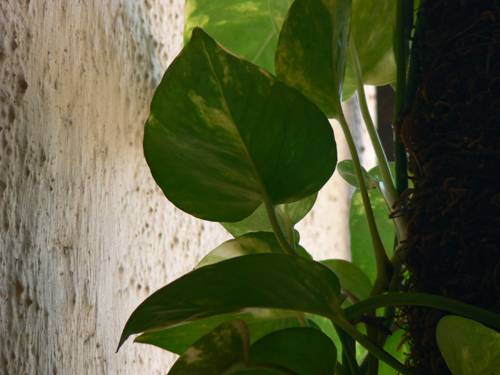
FAQ About Indoor Plant Root Aeration Techniques

What is root aeration for indoor plants?
Root aeration refers to the process of allowing air to penetrate the soil and reach the roots of indoor plants. Adequate aeration is crucial for healthy plant growth as roots require oxygen to absorb nutrients and water effectively. Without proper aeration, roots can suffocate, leading to poor growth or plant death.

Why is root aeration important for indoor plants?
Root aeration is vital because it ensures that roots receive enough oxygen to support essential biological processes. Well-aerated soil promotes healthy root development, enhances nutrient uptake, and provides good drainage, reducing the risk of root rot and other moisture-related problems.

What are common signs that an indoor plant needs better root aeration?
Common signs that an indoor plant needs better root aeration include yellowing leaves, stunted growth, wilting despite adequate watering, and a foul odor coming from the soil. These symptoms can indicate that the roots are not receiving enough oxygen due to compacted soil.

How can I improve root aeration for my indoor plants?
To improve root aeration, you can use several techniques, such as adding perlite or vermiculite to the potting mix to increase porosity, using pots with drainage holes, aerating the soil with a stick or tool to make holes, and choosing a well-structured potting mix designed for good drainage.

What materials can enhance soil aeration for indoor plants?
Materials that can enhance soil aeration include perlite, vermiculite, coarse sand, and coconut coir. These amendments increase the porosity of the soil, allowing air to flow freely around the roots and providing better drainage.

Can overwatering affect root aeration in indoor plants?
Yes, overwatering can negatively affect root aeration. Excess water fills the air spaces in the soil, preventing oxygen from reaching the roots. This can lead to root rot and other issues, emphasizing the need for well-aerated soil and proper watering practices.

Is it necessary to repot indoor plants to achieve better root aeration?
While repotting can help by providing fresh soil with improved aeration properties, it is not always necessary. You can often enhance aeration by adding soil amendments, ensuring proper drainage, and temporarily aerating the soil surface without repotting.

How do pots with drainage holes help in root aeration?
Pots with drainage holes help root aeration by allowing excess water to escape, preventing the soil from becoming waterlogged. This ensures that the air spaces in the soil are preserved, enabling roots to access the oxygen they need.

What is the role of perlite in soil aeration for indoor plants?
Perlite is a lightweight, volcanic glass that expands when heated. It is often added to potting soil to improve aeration and drainage. Perlite helps keep the soil loose and prevents compaction, allowing air and water to circulate freely around plant roots.

Can compacted soil impact root aeration?
Yes, compacted soil severely impacts root aeration by reducing the air spaces available in the soil matrix. Compaction can result from overwatering, the natural breakdown of organic matter, or insufficient soil amendments. Ensuring the soil remains friable and porous is crucial for healthy root aeration.

How often should I aerate the soil of my indoor plants?
The need for soil aeration depends on several factors, including plant type, soil composition, and watering habits. As a general rule, aerating the soil once every few months with a gentle tool can help prevent compaction and improve oxygen flow.

Are there specific tools to aerate soil for indoor plants?
Yes, there are specific tools like soil aerators, which are small devices you can push into the soil to create air channels. Even household items like chopsticks or skewers can be used gently to aerate the soil.

Can using too much soil amendment harm indoor plants?
While soil amendments such as perlite and vermiculite improve aeration, using them excessively can lead to overly dry soil and poor nutrient retention. It's essential to find a balance that supports both aeration and appropriate moisture levels for the specific plant.

How does temperature affect soil aeration?
Temperature affects soil aeration as warmer temperatures can increase metabolic activity in plants, requiring more oxygen at the roots. Conversely, cooler temperatures might slow these processes but ensure soil doesn’t become too moist and compacted due to less evaporation.

Is it better to water indoor plants with aerated soil less frequently?
Yes, it is often better to water plants with aerated soil less frequently but more thoroughly when you do water. This approach helps prevent waterlogging and ensures that the roots can access moisture and oxygen efficiently without becoming oversaturated.

What happens to roots when soil aeration is poor?
Poor soil aeration leads to a lack of oxygen reaching the roots, which hinders their ability to take up water and nutrients. This can cause roots to suffocate, leading to reduced plant growth, yellowing leaves, and potentially plant death if not addressed.

Can layering different soil types improve aeration for indoor plants?
Layering different soil types, such as a mix of light and heavy soils, can indeed improve aeration by enhancing soil structure and promoting drainage. However, it’s essential to choose a balanced mixture that supports the specific needs of the plant type.

What is the difference between aeration and drainage?
Aeration refers to the movement of air through the soil, which is crucial for providing roots with oxygen. Drainage, on the other hand, pertains to how well excess water can move away from the root zone. While they are related, good soil aeration facilitates proper drainage and vice versa.

How does vermiculite differ from perlite in improving soil aeration?
Vermiculite differs from perlite in its ability to retain water and nutrients. While both enhance soil aeration, vermiculite holds more moisture, which can be beneficial for plants that require higher humidity. Perlite, being more porous, is better suited for promoting even better drainage.

Are there specific plants that require more root aeration?
Certain plants, especially those native to drier climates like succulents and cacti, require more root aeration. Plants with larger root systems or those that grow fast may also benefit from enhanced aeration to support their growth and prevent root rot.
